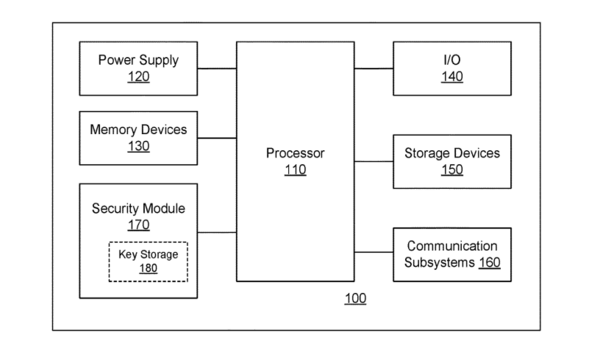Quantum-augmentable hybrid encryption system and method

Figure: A schematic diagram of select functional components of a data communication device implementing some or all of the hybrid encryption scheme.
Summary
A hybrid encryption scheme links a first public key encryption (PKE) scheme with a second PKE scheme through a true random or pseudo-random element, which is used by a sender to encapsulate a symmetrically encrypted message and its associated symmetric key to generate a pair of ciphertexts for transmission to a recipient. The recipient decrypts and decapsulates the ciphertexts, retrieves the random element, and may conduct one or more verification steps to ensure that the ciphertexts were well-formed, and to detect any re-encryption or encapsulation attacks. To encrypt a message, the message and initial random value are encrypted with a symmetric key to provide an intermediate ciphertext. The symmetric key and the encrypted message-value are each encapsulated by distinct algorithms using distinct values derived from the initial random value, such as different hashes, and public keys to provide first and second ciphertexts.
References
| APA | Goncalves, B., Mashatan, A., Fallah, J., Byrne, K., & Siddavaatam, P. (2022). Quantum-augmentable hybrid encryption system and method (U.S. Patent No. 11,431,498). United States Patent and Trademark Office. |
|---|---|
| BibTeX | @misc{goncalves_mashatan_fallah_byrne_siddavaatam_2022, title={Quantum-augmentable hybrid encryption system and method}, author={Goncalves, Brian and Mashatan, Atefeh and Fallah, Jay and Byrne, Kristopher and Siddavaatam, Prathap}, year={U.S. Patent 11 431 498, Aug. 2022} } |
| IEEE | B. Goncalves, A. Mashatan, J. Fallah, K. Byrne, and P. Siddavaatam., "Quantum-augmentable hybrid encryption system and method," U.S. Patent 11 431 498 B2. Aug. 30, 2022. |